#brazilian archaeology
Text

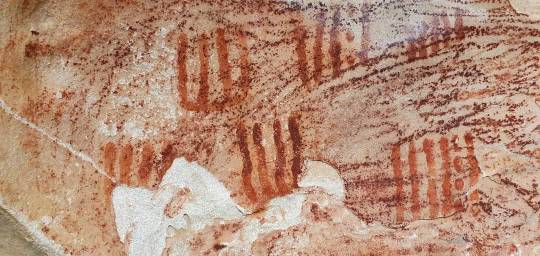
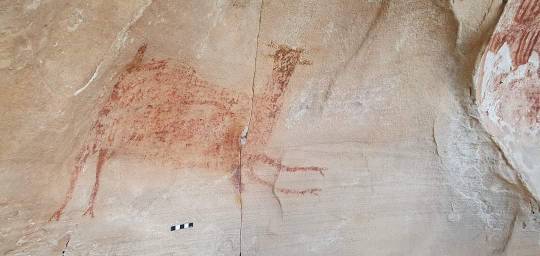


Rock paints at Archaeological site "Toca do Veado" (deer burrow) located in Catimbau National Park, Pernambuco state, northeast of Brazil.
Among the paintings, there is one representing a deer 🦌 Can you see that?
There are more than 45 Archaeological sites in Catimbau National Park, with human occupation dated in 6,000 years ago
Which one of the paintings below is your favorite? Let me know!
--------
Pinturas Rupestres no sítio Arqueológico Toca do Veado, localizado no Parque Nacional do Catimbau, Pernambuco - Brazil.
Entre as pinturas tem uma representando um Veado. Consegue ver?
Existem mais de 46 sítios arqueológicos no Vale do Catimbau, com ocupação humana datada em 6.000 anos atrás.
Qual é sua pintura favorita?
#brazil#brazilian#brazilian archaeology#arqueologia#vale do catimbau#archaeological site#sitio arqueologico#pintura rupestre#rock painting#archaeology#archaeologist
0 notes
Text
Centuries of indigenous presence in the Amazon defy legal attempts to limit the rights of Brazil’s native peoples
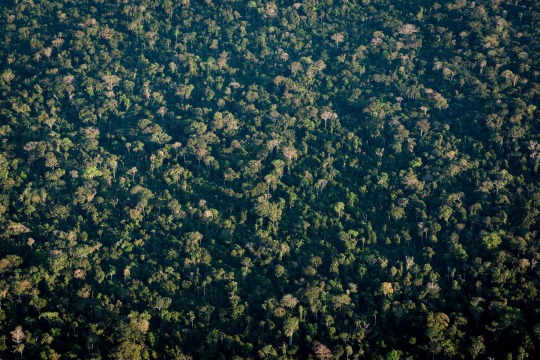
A study made by Brazilian researchers and published on October 5 in the renowned scientific journal Science, one of the world’s most respected academic journals, has found solid evidence that a significant part of the Amazon region has been inhabited by traditional indigenous peoples for at least 12,000 years.
Over the course of five years of research, Vinícius Peripato and Luiz Aragão managed to identify the existence of 24 uncatalogued and completely unknown archaeological sites hidden beneath the forest.
Peripato, a geographer, holds a master’s degree in Remote Sensing from the National Institute for Space Research (INPE) and is about to complete his doctorate in the same field and institution. He is supervised by Professor Luiz Aragão, who holds a master’s and doctorate in Remote Sensing from INPE and co-authored the publication.
In order to understand every detail of this work, which tends to trigger profound reflections on some of the issues currently being debated in the country, such as the right of indigenous peoples to claim ownership of their traditional lands, Brazil Reports spoke to the two researchers.
Continue reading.
#brazil#politics#environmental justice#science#archaeology#brazilian politics#indigenous rights#mod nise da silveira#image description in alt#amazon rainforest
83 notes
·
View notes
Text
List off all funny player books from the library ( stream from the 3rd / third of February 2024, QSMP 2024 return ) .

English-speakers :
BadBoyHalo — 100 Recipes Sweeter than Candy
FitMC — Getting a Brazilian Boyfriend for Dummies
Foolish — 101 Facts about Sharks
Jaiden — Animation Techniques
Philza — He & She: An Archaeology Marvel
Slimecicle — Correct Usage of Mouse Buttons
Wilbur Soot — From a Fallen Country to a World Tour
Ironmouse — A complete guide to Cinnamonroll
Nihachu — Ghost Hunting: A Guide
Teana* — Dating as a Demon
Tubbo — 101 Ways to crash a server
Spanish-speakers:
Quackity — Cómo no morir a las moscas
Luzu – Binario: para tontos
ElMariana — Cómo ser un buen papá
Missa — Cómo detectar nubes de lluvia
Roier — Como casarte con un brasilieño
Vegetta777 — El arte de la simetria en minecraft
WillyRex — Como poner 100 minas en un dia
Carre — TÁCTICAS PUNKY
Portuguese-speakers:
Cellbit — Como traumatizar seus jogadores de RPG
** — Dirigindo Grandes Navios
Mike — Ter uma Deusa como Esposa
Pac — Ser um bom Padrasto
Bagi — Encontrado seu gêmeo perdido
French-speakers:
Antoine — Techniques de méditation
Aypierre — Grands Vins Français
Baghera — Manuel d’utilisation de la tronçonneuse
Etoiles — Être le meilleur
* Not a mistake, just Tina's pseudonym.
** The plate had no name, but we all know it was Felps.
#qsmp#so many qbitos#i will not list them all#qsmp archivists#i guess this one is pretty on point#ty Cellbit for reading them all it was a nightmare trying to find it all from other pov's
643 notes
·
View notes
Text
The Amazon Rainforest is often considered the ultimate wilderness. Here, nature rules ruthlessly in all its grandeur. [...] For many people across the globe, this would be their idea of the Amazon. However, recent archaeological research turns that image on its head. Human presence in the world’s largest tropical rainforest is not only much older than previously thought, but also much more significant and varied than long presumed. Until the turn of the 21t century, the ruling paradigm was that the soil in the Amazon was too poor to support agriculture. And, without enough food, it’s not suited for humankind. Today, there’s little doubt [...] that the Amazon was, in fact, a hotspot for plant cultivation. Eduardo Neves is well-versed in this paradigm shift in Amazonian archaeology and its consequences on our view of the past, present and future of the rainforest. A professor [...] at the University of São Paulo, Brazil, he’s worked for more than 30 years in the central and southwest Amazon. He recently published his latest book, Sob os tempos do equinócio: Oito mil anos de história na Amazônia central (“Under the times of the equinox: 8,000 years of history in central Amazon,” not yet translated into English.) [...]
---
By that time [the late nineteenth century], naturalists and anthropologists had been working in the Amazon for about a century and had encountered very few people. They assumed what they saw was a reflection of the situation in the Amazon before the European conquest, not the result of colonialism. [...] Another reason is that they compared the Amazon to other places in South America, such as the Inca civilization in the Andes [...]. There they saw monumental remains, while in the Amazon lowlands they saw nothing of the sort. The easiest way to explain this was to look at the environment: the rainforest, with its poor soil, did not allow for agriculture [...].
Because the structures he found were so massive, he introduced the term “garden cities.” [...] [T]here was a great diversity in the history of the people living there. [...] In general, there still is a very generic view of people living in the Amazon. One tends to forget the Amazon is larger than continental Europe. People in Sicily are not like people in Scandinavia. Likewise, there is a lot of cultural diversity in the Amazon. And there always has been.
The oldest human presence we found dates back 8,500 years. But in other places in the Amazon the first signs of human occupation are even older. [...] In Brazil, we have the rock paintings of Monte Alegre, which date back almost 12,000 years. People have been living in the Amazon as early as anywhere else in the Americas. Yet, until the 1990s the dominant view was that people could not live in the tropical rainforest, as it does not allow for agriculture. [...]
---
We now know that the Amazon was one of the main cradles of plant cultivation in the world. There is no longer any doubt about that. Numerous very important plants were first cultivated in the Amazon, including manioc, cacao, papaya, peanuts and tobacco. It is a long list. And we now have the archaeological evidence to prove it. The Amazon was a center for agrobiological diversity.
But that is not all.
What is the idea behind domestication? You take a wild plant and then select and manipulate its features in such a way that a new species comes into existence, which is dependent on human intervention for reproduction. In other words, genetic modification is essential for domestication [...].
However, in the Amazon we also see many species that were never domesticated, such as the açaí tree, the Brazilian nut tree and the rubber tree.
Not domesticated, yet very important, as they have been [cultivated] as part of the rainforest for thousands of years.
The conceptual shift [...] is that the Indigenous people who [...] live in the Amazon did practice agriculture, yet they did so in a different way. [...] Which leads us to perhaps the most important paradigm shift of all: the Amazon Rainforest is not so much, or not only a natural heritage, but a biocultural heritage. [...]
---
The idea that the Amazon must be conquered, colonized, transformed and domesticized - it simply does not work. Look at what is happening today. We cut the forest, bring soy, corn, cows and grasslands. Over the last 50 years we’ve destroyed some 20% of the rainforest [...].
Two things: First, the idea of a protected rainforest without people does not make sense. The past teaches us there were once many people spread out over a large territory. And there still are many traditional inhabitants, not only Indigenous people, but also ribeirinhos [riverside dwellers] and quilombolas [Afro-Brazilian communities]. And these are the people that help protect the rainforest.
Second, intensive agriculture is a concept that urgently needs reconsidering. The idea is to produce as much as possible of a certain crop in one area for as long as possible. But take the Brazilian nut tree that grows and flourishes as part of the forest for 300 or 400 years.
---
Text above are the words of Eduardo Neves. As interviewed and transcribed by Peter Speetjens. “’Many features of the Amazon are man-made’: Q&A with archaeologist Eduardo Neves.” Mongabay. 3 May 2023. [The italicized first paragraph in this post was published by Speetjens/Mongabay as a sort of introduction, published alongside the responses of Neves. Bold emphasis and paragraph breaks/contractions added by me.]
61 notes
·
View notes
Text




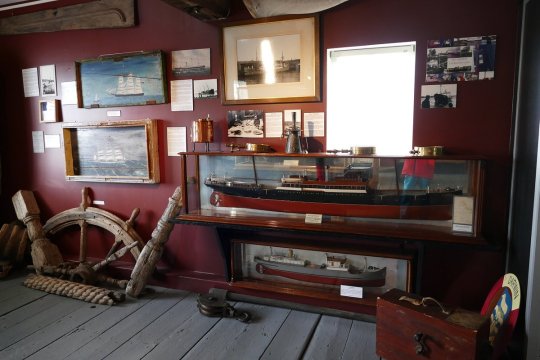

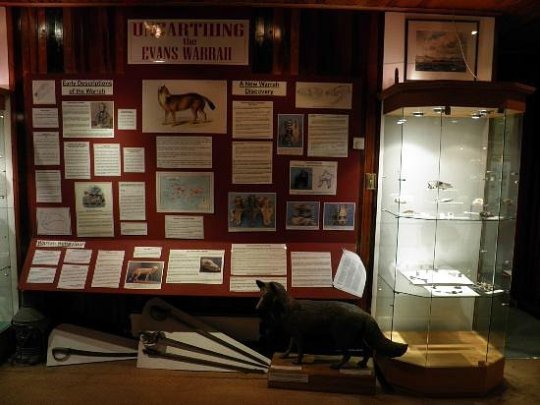

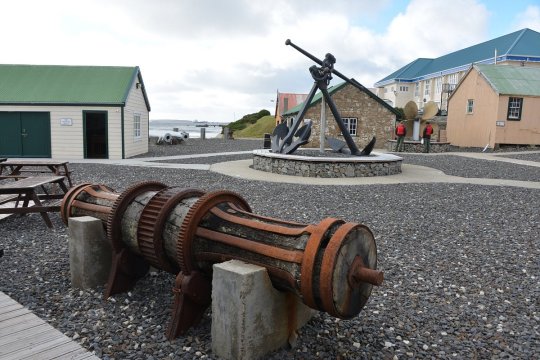
Britannia House
Historical landmark in Stanley, Falkland Islands (Islas Malvinas)
The Falkland Islands Museum is located at the historical dockyard site in Stanley, the capital of the Falkland Islands in the South Atlantic Ocean. It is run by the Falkland Islands Museum and National Trust (FIMNT), which is a registered charity. The museum has no formal collections policy, but it covers the natural and cultural history of the Falkland Islands. The FIMNT is also involved in the care and protection of various sites and structures of archaeological and historic importance through the islands
The initiative to establish a permanent museum for the Falklands originated at the beginning of the 20th century, when Mrs. Allardyce, wife of the serving governor Sir William Lamond Allardyce, advocated to create a collection of exhibits of the colony's history...
In 1987 it was decided to reopen the museum in "Britannia House" as the Government Dockyard - the ideal site for the new museum was available for some time, whereas Britannia House was almost immediately available. The building now known as Britannia House was a Brazilian prefabricated house constructed in 1981 for the Argentine airline L.A.D.E. which operated an air service to Stanley at the time. After the end of the occupation, the house was given its new name and was used by various Commanders of British Forces in the Falklands until Mount Pleasant Airport was completed in 1985 and the garrison moved out of Stanley
Address: 8459+H99, Holdfast Rd, Stanley FIQQ 1ZZ, Falkland Islands (Islas Malvinas)
Falkland Islands Museum and National Trust - Wikipedia
14 notes
·
View notes
Text

NAVIGATION
︵﹆ . ⁺ . ✦ ﹒₊˚𓂃 ★﹒₊‧ ★・⸝⸝﹒₊˚﹕﹒₊‧ ﹒₊˚𓂃・・
𝒽𝒾, 𝒾'𝓂 𝑔𝒾𝑜, and welcome to my blog!
requests are always open.

MASTERLIST | RULES | SPOTIFY

i'm 22, brazilian, she/her and a writer since i was 11.
i've always written original novels, but fanfiction has always had my heart.
cancer sun, cancer moon, leo rising. currently living the dream and studying archaeology. english isn't my first language so there'll be some mistakes around. i also deal with depression and anxiety, so don't be mad at me if i take too long to write something lol
favorite shows: medici, black sails, station 19, criminal minds
favorite movies: the godfather, pride and prejudice, sleeping beauty
lewis hamilton & charles leclerc are my religion
i'd love to chat if you're interested.
︵﹆ . ⁺ . ✦ ﹒₊˚𓂃 ★﹒₊‧ ★・⸝⸝﹒₊˚﹕﹒₊‧ ﹒₊˚𓂃・・

giovana gazzana roso, 2024 || all work is my own. please don't copy, rewrite or translate any of my work on any platforms
main blog @gazz-ana

3 notes
·
View notes
Text
QUESTIONS FOR 15 FRIENDS tagged by @veditas
ARE YOU NAMED AFTER ANYONE?: actually, yes. my mom named me after some soap opera character lol (and now everyone knows that i'm latina)
WHEN WAS THE LAST TIME YOU CRIED?: when a friend messed with me about losing in mario party in new years eve
DO YOU HAVE KIDS?: nooo i'm the kid
WHAT SPORTS DO YOU PLAY/HAVE YOU PLAYED?: when i was a kid, swimming. now i try to run and i dance ballet
DO YOU USE SARCASM?: what? no!
WHAT IS THE FIRST THING YOU NOTICE ABOUT PEOPLE?: idk, probably how they treat random people as waiters, cleaning staff and etc.
WHAT’S YOUR EYE COLOUR?: light brown!
SCARY MOVIES OR HAPPY ENDINGS?: happy endings (in fanfiction), bittersweet endings (in everything else)
ANY TALENTS?: pick cute outfits and doing a killer eyeliner :p
WHERE WERE YOU BORN?: São Paulo, Brazil
WHAT ARE YOUR HOBBIES?: cooking (probably this is my love language) and reading. i do love writing as well, but ever since i've got into academic stuff i'm kinda tired, so i'm only journaling for now (and writing my freaking research proposal)
DO YOU HAVE ANY PETS?: i had a dog for 15 years and she passed last year. i'm still grieving and i miss her every single day.
HOW TALL ARE YOU?: 5' 3"
FAVOURITE SUBJECT IN SCHOOL?: early modern history, archaeology, classical anthropology, history of science
DREAM JOB?: i don't dream about working lol but my main goal is to be a fulltime researcher and teach brazilian archaeology as professor.
2 notes
·
View notes
Photo





♕ 200 years since Maria Leopoldina of Austria signed the Decree of Independence of Brazil — SEPTEMBER 02, 1822
On September 2, 1822, a new decree from Portugal arrived in Rio de Janeiro while the Prince Regent of Brazil, Dom Pedro, was in a political tour in the Province of São Paulo. The letter overturned the Brazilian government and demanded the immediate return of Pedro to Portugal. Since August 13 the Princess Maria Leopoldina of Austria was the Acting Princess Regent of the Kingdom of Brazil and head of the Council of State in the absence of her husband. Aware that Portugal intended to relegate Brazil again to the status of a simple colony rather than a kingdom united to that of Portugal and fearing a civil war the Princess acted imediately. Maria Leopoldina met in the morning of 2 September 1822 the minister José Bonifácio de Andrada e Silva and summons the Council of State. She signs on that day the Decree of Independence, declaring Brazil separate from Portugal. Leopoldina sends Pedro the news, along with letters from her and from José Bonifácio urging him to proclaim the independence of Brazil. In her letter the Princess Regent says to her husband: "The fruit is ripe, pick it up, otherwise it will rot". On September 7, 1822 at the shore of the Ipiranga River in São Paulo the letters reached Dom Pedro and he declared the independence of Brazil from the former United Kingdom of Portugal, Brazil and the Algarves. The Prince and Princess then became Emperor Dom Pedro I of Brazil and Empress Consort Maria Leopoldina of Austria.
Coincidentally, 196 years later, on September 2, 2018 the Palace of São Cristóvão, then the home of the Museu Nacional (National Museum of Brazil) was destroyed in a large fire. The palace was the residence of the Portuguese Royal Family and the Brazilian Imperial Family between 1808 and 1889, and housed the Museum and it’s collection of natural history, ethnology and archaeology since 1892. The facade of the building still stands, but the approximately 122 rooms and the majority of the 20 million objects of the Museum’s collection were lost.
Letícia Colin as Princess Maria Leopoldina of Austria, the Empress Consort of Brazil, Queen Consort of Portugal and Archduchess of Austria in “Novo Mundo” (2017).
#novo mundo#perioddramaedit#weloveperioddrama#historyedit#perioddramasource#onlyperioddramas#historicwomendaily#userperioddrama#braziliansource#periodedits#women in history#period drama#brazilian history#history#brasil#brazil#cinemapix#cinematv#femaledaily#maria leopoldina of austria#maria leopoldina#empress maria leopoldina#novomundoedit#mine#mine: edit#mine: novo mundo#mine: maria leopoldina#mine: novela#mine: brasil#mine: brazilian tv
45 notes
·
View notes
Text
Severe Drought in the Amazon Reveals Millennia-Old Carvings
— The Millennia-Old Carvings Were Peviously Hidden Under Water.
— By Fernando Crispim and Edmar Barros | Associated Press | October 28, 2023
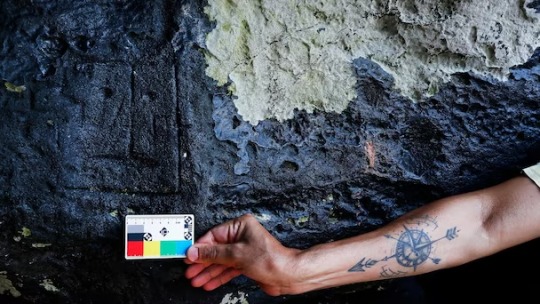
An archaeologist measures rock paintings at the Ponta das Lajes archaeological site, in the rural area of Manaus, Brazil, Saturday, Oct. 28, 2023. The archaeological site was exposed following a drought in the Negro River, unveiling rock paintings that, according to archaeologists, date back between 1,000 and 2,000 years. (AP Photo/Edmar Barros) The Associated Press
MANAUS — The Negro River, the major tributary that runs through the Brazilian Amazon, has reached historic lows, revealing millennia-old carvings previously hidden under water.
The engravings deeply etched into the black rock along the riverbanks represent human faces, animals and other figures, and are thought to be 1,000 to 2,000 years old, archaeologists said.
“They allow us to understand the way of life of prehistoric populations,” Jaime de Santana Oliveira, an archaeologist with Brazil’s National Historic and Artistic Heritage Institute, said.
The scientists think other rocks at the site were used to sharpen arrows and stone tools.


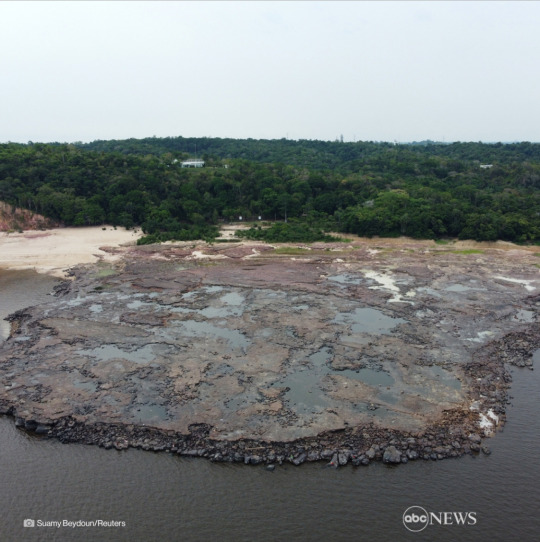
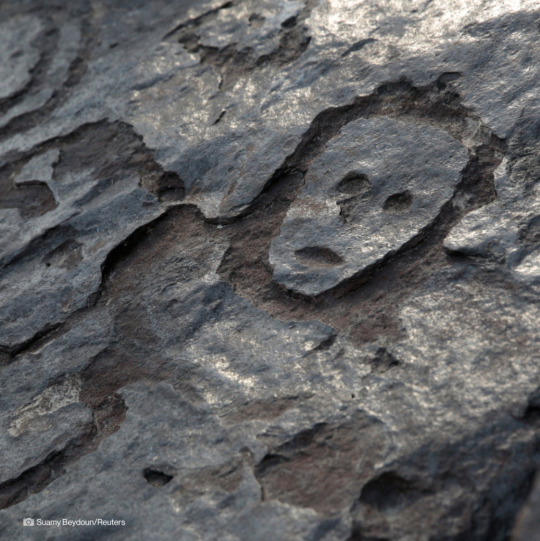
The Ponto das Lajes archaeological site is located in the rural area of Manaus, the largest city and capital of Amazonas state. From there, locals and tourists can observe the “Meeting of Waters,” which occurs when the dark, Coca-Cola-colored Negro River and the pale, clay-colored Solimoes River converge without merging and run parallel to each other over several miles.
The petroglyphs first were spotted in 2010, when another bad drought struck the region, but had not been observable since then before the current drought.
Low river levels in Amazonas have turned once navigable rivers into endless sand banks and mud, leaving hundreds of communities isolated. Public authorities have scrambled to get food and water to those communities in recent weeks.
Earlier this week, The Associated Press observed the delivery of basic goods. Boats had to dock miles away, forcing residents, most of them small farmers and fishermen, to walk long distances.
Manaus and other nearby cities are experiencing high temperatures and heavy smoke from fires set for deforestation and pasture clearance. The drought is also the likely cause of dozens of river dolphin deaths in Tefe Lake, near the Amazon River.
Dry spells are part of the Amazon’s cyclical weather pattern, usually from May to October. This season’s drought has been fiercer than usual due to two climate phenomena: the warming of northern tropical Atlantic Ocean waters and El Niño — the warming of surface waters in the Equatorial Pacific region.
#Severe | Drought#Amazon | Brazil 🇧🇷#Negro River | Carvings#Archaeologist | Jaime de Santana Oliveira#Brazil’s National Historic and Artistic Heritage Institute#Scientists#Dark Coca-Cola-Colored Negro River#The Pale Clay-Colored Solimoes River#The Associated Press#Atlantic Ocean Waters | El Niño
3 notes
·
View notes
Text
The debate over exactly when humans first arrived in the Americas might have been hijacked by some rather handy capuchin monkeys, according to a new analysis of Stone Age tools in Brazil. After examining the Pleistocene era artifacts, the study authors concluded that they were probably fashioned by the fuzzy little primates.
Researchers scrutinized images of previous finds from the archaeological site of Pedra Furada in the Brazilian state of Piauí, where a cache of stone tools dated to between 32,000 and 50,000 years ago.
4 notes
·
View notes
Text
By Andrew Downie
The Guardian
Aug. 28, 2022
An unidentified and charismatic Indigenous man thought to have been the last of his tribe has died in the Brazilian Amazon, causing consternation among activists lamenting the loss of another ethnic language and culture.
The solitary and mysterious man was known only as the Índio do Buraco, or the “Indigenous man of the hole”, because he spent much of his existence hiding or sheltering in pits he dug in the ground.
Over a period of decades, during which his land was attacked and friends and family were killed, he resisted all attempts to contact him, laying traps and shooting arrows at anyone who came too close.
“Having endured atrocious massacres and land invasions, rejecting contact with outsiders was his best chance of survival,” said Sarah Shenker, a campaigner at Survival International, the global movement for tribal peoples.
“He was the last of his tribe, and so that is one more tribe made extinct – not disappeared, as some people say, it’s much more active and genocidal a process than disappearing.”
Officials know very little about the man, but his determined independence and evident solace helped create a mystique around him that captured the attention of activists and media across Brazil and around the world.
Dos Santos said he and other Funai officials left strategically placed gifts of tools, seeds and food but were always rebuffed.
They believe that sometime in the 1980s, illegal ranchers, after leaving initial offerings of sugar, gave the tribe rat poison that killed all bar the “man of the hole”.
A Funai official who monitored the man’s wellbeing from a distance found his body lying in a hammock in a state of decomposition. Because he had placed brightly coloured feathers around his body, the official believes the man had prepared for death. He estimated the man was about 60 years old.
Indigenous organisations put the number of remaining tribes at between 235 and 300, but an exact figure is hard to determine because some tribes have had very little contact with settler society.
At least 30 groups are believed to be living deep in the jungle and next to nothing is known about their numbers, their language or culture.
“Because he resolutely resisted any attempts at contact, he died without revealing which ethnicity he belonged to, nor the motivations of the holes he dug inside his house,” the Observatory for the Human Rights of Isolated and Recent Contact Indigenous Peoples (OPI) wrote on learning of the man’s death.
“[He] clearly expressed his option for distancing himself without ever saying a single word that would allow his identification with some known Indigenous language.”
OPI said Funai officials first noticed the man in the mid-1990s. Indigenous activists found small plots of farmed land that had been destroyed by invading ranchers and the remains of dwellings they believe had been swept away by tractors. Large, hand-dug pits were also present.
The area, along Brazil’s border with Bolivia, was and remains under attack by ranchers, prospectors and loggers who covet its valuable natural resources.
The discovery led Funai to fence off an area where the man could live unhindered, and in 1997 the Tanaru reserve was formally created.
OPI called for the reserve to be maintained in its present state and asked officials to carry out archaeological and anthropological studies that could shed some light on the man’s background and way of life.
The number of tribes whose land is under threat has soared since the far-right president, Jair Bolsonaro, took power in 2018. The number of invasions registered on Indigenous land rose from 109 in 2018 to 305 last year, according to the rights group Cimi.
Bolsonaro has long made his contempt for Indigenous peoples clear, once saying Brazil had erred by not decimating native peoples like the US cavalry did. Before assuming the presidency, he vowed not to give Indigenous people one more square centimetre of land, and he has kept that promise.
13 notes
·
View notes
Text
Machu Picchu Adventure: Ollantaytambo
We drove from the middle of nowhere to Ollantaytambo which was a bustling little town that looked quite fun to explore, but unfortunately we only had time for the archaeological ruins tour. Our tourist tickets were pulled out again and clipped when we went through the entrance. Inside we could see rows of steep terraces and Darwin said our goal was to reach the top. The Brazilian ladies didn’t come up but the rest of us slowly made our way up, five terraces at a time. Each terrace is about 3m high. We looked over the Ollantaytambo town and a huge rock to the side of it, the rock had a few faces hidden in it and one had been carved with a crown on top. At the top we could see the beginnings of a temple, large stones carved and interlocked with one another and others lying around waiting to be included in the structure. Darwin then led us back down to the bathrooms and then out into the market of Ollantaytambo but rushed us through to wait for John to bring the van. He arrived a few minutes later and we all piled in. As soon as we got on board Darwin told us to prepare our things to be dropped off at the train station and then we were promptly set out on the footpath and told to walk down the street to the station. I made my way down with Leo and Giada, the Italian couple, and we stopped for a drink in a cafe since we were a little too early. I had a milkshake and they went for mango juices. We made sure to be at the train station 30 minutes prior to departure as our tickets threatened that we may not be able to board if we were late. As we stood around with the crowd of people at the door of the station a big dog fight broke out with the street dogs barking and biting each other. A heroic (American) lady called Julia leapt into action and tried to break it up without fear of rabies or other street dog diseases and despite the frantic cries of her fellow travellers “Julia, no! Julia, stop!” After that excitement we were in for a treat when the train was ready for boarding. Suddenly it all made sense why we needed to arrive so early as all the passengers were swept up in a festive surprise parade led by the PeruRail staff. There were 6 ladies in traditional colourful dress holding signs with letters that we followed down the street past all the market stalls, they danced to the music as they led us through the gate to the train platform for boarding. Leo, Giada, and I were in carriage C so we followed our lady all the way down and then prepared to board. Unfortunately I wasn’t seated with them but I ended up sitting with the Filipino ladies instead for the train ride. It was about two hours long through amazing scenery of rolling hills and rivers and a few rundown little shacks here and there. It was just after dark when we arrived in Aguas Calientes and upon leaving the train station we found ourselves in the market surrounded by loads of people holding signs with names so I was searching them all frantically to find my own. The Filipino ladies and I were all reunited again when we found ourselves with Joel and his sign with our three names. He walked us up the steep streets to our hotel and got us checked in and acquainted with the town. I headed back out shortly afterward to buy some snacks and water for tomorrow. My option was either to meet in the lobby of the hotel at 6.20am or hike up to Machu Picchu starting around 5-5.30am and meet them at the entrance at 7am. As the sunrise wasn’t until after 6am and I would be going alone I opted for the bus ride up and would then walk back down. The bus ride is $12 each way and for the price per kilometre it is the most expensive bus journey in South America. I successfully bought my ticket one way to go up in Spanish and made sure I had $12 in my cleanest, tidiest bills in my wallet in case I wanted to buy a ticket back down. With tomorrow prepared, I went out in search of dinner and chose fried trout with potatoes. I treated myself to an Inca Kola too as I wanted to try this bright yellow drink at least once! I think it will only be the once though…
2 notes
·
View notes
Text
Drought in Brazil's Amazon Reveals Ancient Engravings
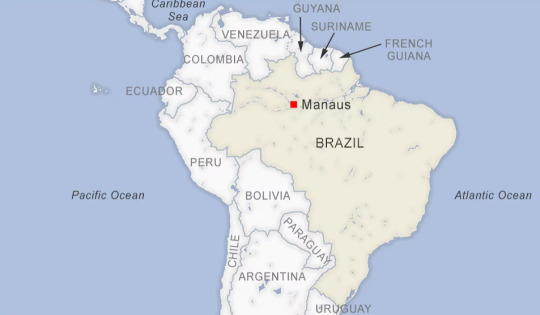
An extreme drought in parts of the Amazon has led to a dramatic drop in water levels in the river, exposing dozens of usually submerged rock formations with carvings of human forms that may date back some 2,000 years.
Livia Ribeiro, a longtime resident of the Amazon's largest city, Manaus, said she heard about the rock engravings from friends and wanted to check them out.
"I thought it was a lie ... I had never seen this. I've lived in Manaus for 27 years," said Ribeiro, an administrator, after viewing the dazzling relics.
The rock carvings are not usually visible because they are covered by the waters of the Negro River, whose flow recorded its lowest level in 121 years last week.
The surfacing of the engravings on the riverbank have delighted scientists and the general public alike but also raised unsettling questions.
"We come, we look at (the engravings) and we think they are beautiful. But at the same time, it is worrying... I also think about whether this river will exist in 50 or 100 years," Ribeiro said.
Continue reading.
#brazil#science#archaeology#environmentalism#politics#brazilian politics#amazon rainforest#mod nise da silveira#image description in alt
67 notes
·
View notes
Text
Major Project
- Further Refining
After my presentation we came to the conclusion that I need to compact the idea even further, we spoke about potential directions to take the idea to make it as successful as possible. We spoke about creating an exhibition/campaign for a museum, I like this idea as it gives me more to create and also allows me to explore parts of my original idea. We also spoke about looking into one part of steel, so for that I want to explore steel structures. Potentially creating a series of posters alongside a concertina to promote and celebrate the steel industry. For this project I now need to research into past campaigns and designs from museums and look at what makes them successful.
Kelham Island Museum, Sheffield
Established in 2021, the charity cares for the city’s collections of art, archaeology, social and industrial history, and natural science, alongside the Guild of St George’s John Ruskin collection and is home to the Ken Hawley Collection Trust’s Hawley Tool Collection.
We work with our communities to tell remarkable stories of Sheffield and its people, and celebrate its reputation for excellence in craft, making and innovation. Together with local, regional and national partners, we showcase home-grown creative talent and bring outstanding cultural experiences to the city.
https://www.sheffieldmuseums.org.uk/visit-us/kelham-island-museum/



Magna Science Adventure Centre,
set in the former Templeborough steelworks in South Yorkshire. It is a vast building, a third of a mile long and 150 feet high. Four pavilions house over 100 hands-on exhibits themed on Air, Earth, Fire and Water, the ‘elements’ needed for making steel, where you can discover science, technology and the region’s industrial heritage. The spectacular Big Melt Show re-creates the story of the steelworks.
https://www.visitmagna.co.uk/


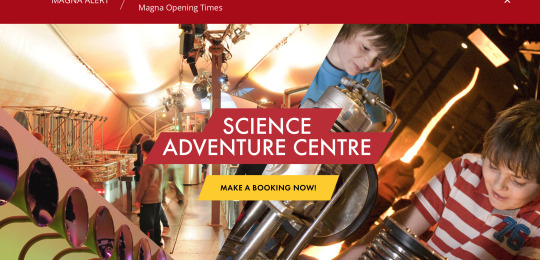
- Art Exhibitions
Although these are different subjects to mine I still find it relevant to understand how it drew the audience how It uses a narrative that is engaging and also i can use them as inspiration in how my idea could look.
Lokame Tharavadu
The core idea of this exhibition, Lokame Tharavadu or 'the world is one family', is drawn from the verses of a Malayalam poem written by Vallathol Narayana Menon, which appeals to the universal spirit of humanity. Departments of Tourism and Culture and Alappuzha Heritage Project. The art exhibition is hosted at five venues in Alappuzha.
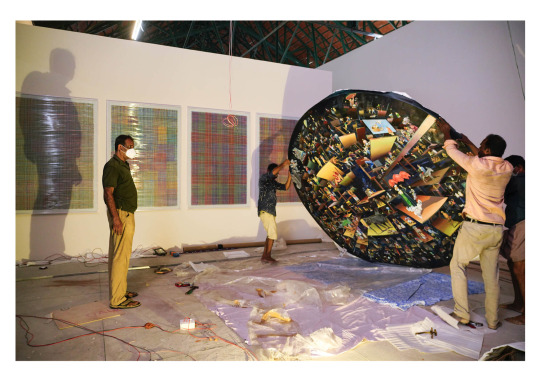
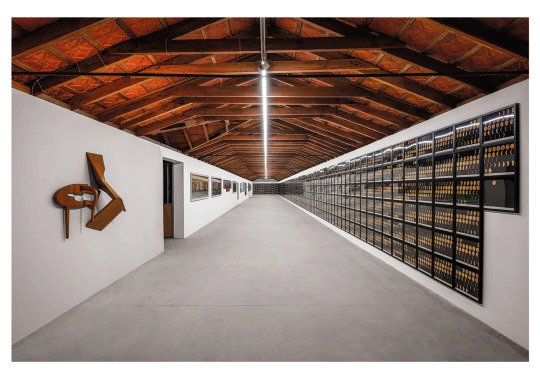
Rosângela Rennó: Small Ecology of the Image
The Brazilian artist Rosângela Rennó has been obsessively studying images and their relationship to truth and dominant narratives for over 35 years. comprises 130 photography and video based works. From spectral, family-album portraits of soldiers in uniform that Rennó obscures with red tint, to granular images of street protesters creating a new view on history.
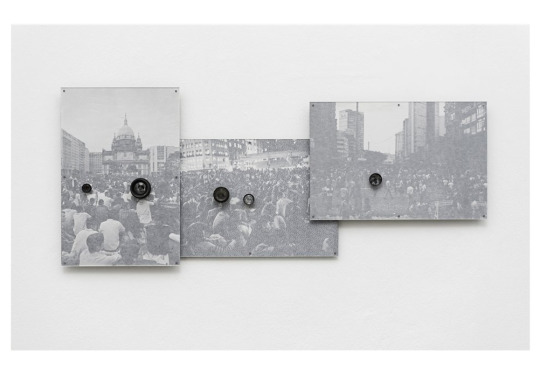

Alexander McQueen: Savage Beauty
Alexander McQueen's dashing creativity was expressed through the technical artistry of his designs and the dramatic intensity of his fashion shows. Drawing on avant-garde installation and performance art, these were also emphatically autobiographical. McQueen fearlessly challenged the conventions of fashion.


Against The Odds
Designed by C&G Partners,this thoughtful project encouraged visitors to learn about the lives of refugees and rescuers through various media. The exhibition has won numerous awards.
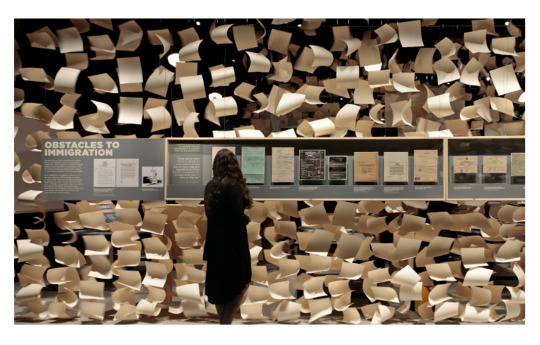

- Focusing on Histroic Exhibitions
After exploring a few successful exhibits and how they capture the audiance and communicate their theme and narrative, I thought it was now important to look at Historic Exhibitions as I want to explore the historic and famous structures of steel. So this is now more relevant to my project and helps me to understanding how to better create a new visual representation of history.
Back from the Dead: Demystifying Antibiotics
The exhibition includes work of bioartist Anna Dumitriu, who creates artwork through the direct sure of bacteria and has engaged internationally with issues of microbial resistance. The Museum's Director Dr Silke Ackermann comments that "Back from the Dead brings together past and future science with contemporary medical challenges in a novel way, revealing an extraordinary Oxford story and the human face of research in dramatic times".
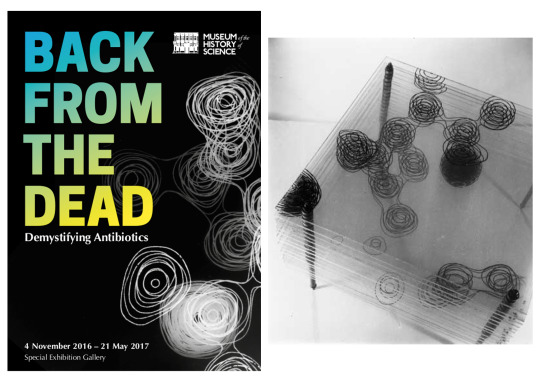
Precious and Rare: Islamic Metalwork from The Courtauld
Discover how each precious and rare object is a 'cultural conversation', with its own unique story which always starts and ends in a different place. And those cultural conversations continue today, with objects and stories from the Multaka Oxford volunteers and the local community — including an interactive digital programme where you can design your own Islamic-inspired patterns.
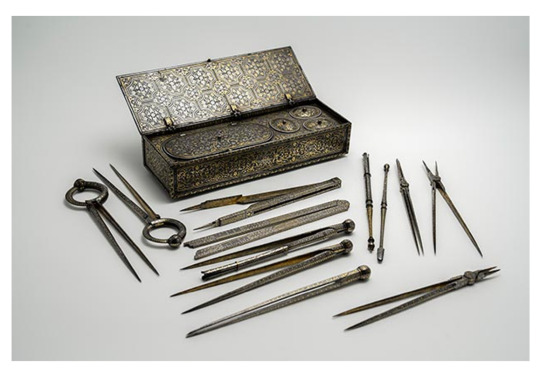

Atmospheres
An exhibition by the Museum of the History of Science in collaboration with Atmospheric, Oceanic and Planetary Physics and the School of Geography and the Environment at the University of Oxford.

Anvilled Stars
Matthew Galpin's meteor mirrors are hiding amongst objects in the Museum's Top Gallery. This temporary exhibition ran from 20 November 2010 to 6 February 2011.

- Sources
https://hyperallergic.com/697772/the-best-of-2021-our-top-10-exhibitions-around-the-world/
https://fastforward.photography/rosangela-renno-small-image-ecology/?utm_source=rss&utm_medium=rss&utm_campaign=rosangela-renno-small-image-ecology
https://segd.org/20-most-influential-exhibit-designs-century
https://www.theartnewspaper.com/2020/03/31/arts-most-popular-here-are-2019s-most-visited-shows-and-museums
https://www.hsm.ox.ac.uk/past-exhibitions-and-displays
https://segd.org/against-odds-exhibition-0
https://www.mhs.ox.ac.uk/backfromthedead/
https://www.hsm.ox.ac.uk/islamicmetalwork
2 notes
·
View notes
Text
New Seven Wonders of the World
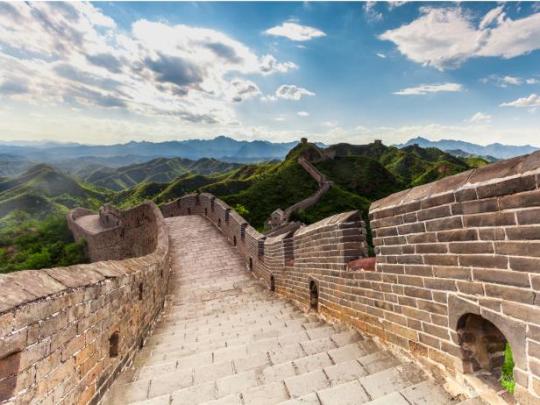
Great Wall of China (China)
Built between the 5th century B.C. and the 16th century, the Great Wall of China is a stone-and-earth fortification created to protect the borders of the Chinese Empire from invading Mongols. The Great Wall is actually a succession of multiple walls spanning approximately 4,000 miles, making it the world's longest manmade structure.
Christ the Redeemer Statue (Rio de Janeiro)

Sam Valadi via Flickr Creative Commons BY-NC-ND 2.0
The Art Deco-style Christ the Redeemer statue has been looming over the Brazilians from upon Corcovado mountain in an awe-inspiring state of eternal blessing since 1931. The 130-foot reinforced concrete-and-soapstone statue was designed by Heitor da Silva Costa and cost approximately $250,000 to build - much of the money was raised through donations. The statue has become an easily recognized icon for Rio and Brazil.
Machu Picchu (Peru)

Bruce Tuten via Flickr Creative Commons BY-NC-ND 2.0
Machu Picchu, an Incan city of sparkling granite precariously perched between 2 towering Andean peaks, is thought by scholars to have been a sacred archaeological center for the nearby Incan capital of Cusco. Built at the peak of the Incan Empire in the mid-1400s, this mountain citadel was later abandoned by the Incas. The site remained unknown except to locals until 1911, when it was rediscovered by archaeologist Hiram Bingham. The site can only be reached by foot, train or helicopter; most visitors visit by train from nearby Cusco.
Chichen Itza (Yucatan Peninsula, Mexico)

Pavel via Flickr Creative Commons BY-NC-ND 2.0
The genius and adaptability of Mayan culture can be seen in the splendid ruins of Chichen Itza. This powerful city, a trading center for cloth, slaves, honey and salt, flourished from approximately 800 to 1200, and acted as the political and economic hub of the Mayan civilization. The most familiar ruin at the site is El Caracol, a sophisticated astronomical observatory
The Roman Colosseum (Rome)
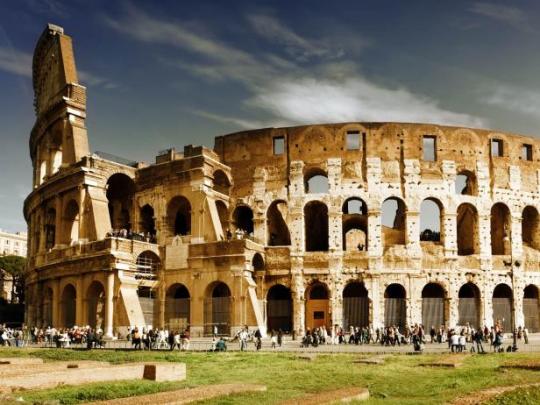
Sam Valadi via Flickr Creative Commons BY-NC-ND 2.0
Rome's, if not Italy's, most enduring icon is undoubtedly its Colosseum. Built between A.D. 70 and 80 A.D., it was in use for some 500 years. The elliptical structure sat nearly 50,000 spectators, who gathered to watch the gladiatorial events as well as other public spectacles, including battle reenactments, animal hunts and executions. Earthquakes and stone-robbers have left the Colosseum in a state of ruin, but portions of the structure remain open to tourists, and its design still influences the construction of modern-day amphitheaters, some 2,000 years later.
Taj Mahal (Agra, India)

Brandon Price via Flickr Creative Commons BY-NC-ND 2.0
A mausoleum commissioned for the wife of Mughal Emperor Shah Jahan, the Taj Mahal was built between 1632 and 1648. Considered the most perfect specimen of Muslim art in India, the white marble structure actually represents a number of architectural styles, including Persian, Islamic, Turkish and Indian. The Taj Mahal also encompasses formal gardens of raised pathways, sunken flower beds and a linear reflecting po
Petra (Jordan)
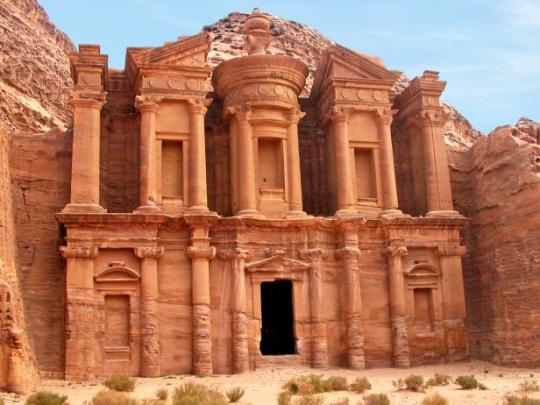
Dennis Jarvis via Flickr Creative Commons BY-NC-ND 2.0
Declared a World Heritage Site in 1985, Petra was the capital of the Nabataean empire of King Aretas IV, and likely existed in its prime from 9 B.C. to A.D. 40. The members of this civilization proved to be early experts in manipulating water technology, constructing intricate tunnels and water chambers, which helped create an pseudo-oasis. A number of incredible structures carved into stone, a 4,000-seat amphitheater and the El-Deir monastery have also helped the site earn its fame.
3 notes
·
View notes
Text
Traveling exhibition Nhe’ẽ Porã: Memory and Transformation – Belém (PA)
Emílio Goeldi Paraense Museum
From February 7th to July 28th, 2024
It proposes a dive into the history, memory and current reality of the languages of the indigenous peoples of Brazil, through ethnographic and archaeological objects, audiovisual installations and works of art. The exhibition seeks to show other points of view on the material and immaterial territories, histories, memories and identities of these people, bringing to light their trajectories of struggle and resistance, as well as the corners and charms of their cultures.
Among the pieces included in the exhibition are several buttons – a type of adornment used to enlarge the lower lip; and tembetás - pieces of quartz placed under the lips. Both are objects that demonstrate skills valued among many people: oratory and listening. Also included in the exhibition was a rare bench carved in quartz, which in the Tukano worldview is directly associated with the grandmother of the universe, Yepário.
For a century and a half, the Museu Paraense Emílio Goeldi has been carrying out research, dissemination and preservation work on the ways of indigenous peoples, among the most recent includes the project Replicando o Passado, in partnership with potters from Icoaraci, district of Belém (PA ).
A product of this project, a replica of a Marajoara funerary urn, originally created by indigenous people who inhabited the Amazon region since approximately the year 500, will also be displayed at the exhibition.
Find out more about the exhibition
“Language is thought, language is spirit, language is a way of seeing the world and appreciating life”. This is how curator Daiara Tukano describes the starting point of Nhe’ẽ Porã: Memory and Transformation. The immersion begins with the name of the exhibition itself, which comes from the Guarani Mbya language: nhe’ẽ means spirit, breath, life, word, speech; and porã means beautiful, good. Together, the two words mean “beautiful words”, “good words” – that is, sacred words that give life to the human experience on earth.
With the participation of around 50 indigenous professionals, the exhibition is co-curated by anthropologist Majoí Gongora; special consultancy from Luciana Storto, a linguist specializing in the study of indigenous languages; in dialogue with the special curator of the Portuguese Language Museum, Isa Grinspum Ferraz.
The exhibition has a circular logic guided by a river of words written in different indigenous languages that crosses the entire exhibition space, connecting the rooms in a continuous cycle. At the beginning of the exhibition, the visitor comes across a forest of indigenous languages representing the great diversity that exists today in Brazil. In this forest, the public will be able to discover the sound of several of them.
The room next door, “Language is Memory”, brings to light histories of contact, violence and conflict resulting from the invasion of indigenous territories from the 16th century to contemporary times, problematizing the colonial process that declares itself “civilizing”. In this environment, other stories will be told through archaeological objects, works by indigenous artists, documentary records, audiovisual resources, multimedia and maps created especially for the exhibition with data on the distribution of the population and indigenous languages across Brazilian territory.
The transformations of indigenous languages are addressed in content that explores the resilience, richness and multiplicity of indigenous peoples' forms of expression. “We put into debate the fact that we are described as unscripted people, without writing, but our paintings are also written – just not alphabetic”, explains Daiara Tukano.
In the third room, the public will learn about the plurality of contemporary indigenous actions and creations, distributed in thematic niches, based on their protagonism in different spaces of society, such as their performance in teaching, research and artistic languages. In the space it is also possible to watch scenes from the Indigenous Peoples March, directed by filmmaker Kamikia Kisédjê.
By following the river's route, visitors reach a fourth nocturnal environment, an introspective dreamlike atmosphere that allows contact with the force present in the songs of masters of beautiful words. The river that ran along the exhibition floor now climbs the wall like a large snake until it turns into clouds of words – preparing the rain that will flow over the river itself again, continuing the cycle.
source: https://www.gov.br/museugoeldi/pt-br/arquivos/noticias/exposicao-nhe2019e-pora-memoria-e-transformacao-chega-ao-museu-goeldi
#edisonmariotti edison mariotti @edisonblog
.br
Exposição itinerante Nhe’ẽ Porã: Memória e Transformação – Belém (PA)
Museu Paraense Emílio Goeldi
De 7 de fevereiro a 28 de julho de 2024
Propõe um mergulho na história, memória e realidade atual das línguas dos povos indígenas do Brasil, através de objetos etnográficos, arqueológicos, instalações audiovisuais e obras de arte. A exposição busca mostrar outros pontos de vista sobre os territórios materiais e imateriais, histórias, memórias e identidades desses povos, trazendo à tona suas trajetórias de luta e resistência, assim como os cantos e encantos de suas culturas.
Entre as peças incorporadas à exposição estão vários botoques – tipo de adorno usado para alargar o lábio inferior; e tembetás - peças de quartzo colocadas sob os lábios. Ambos são objetos que evidenciam habilidades valorizadas entre muitos povos: a oratória e a escuta. Também foi incluído na exposição um raro banco esculpido em quartzo que na cosmovisão tukano está diretamente associado à avó do universo, Yepário.
Há um século e meio que o Museu Paraense Emílio Goeldi desenvolve trabalhos de pesquisa, divulgação e preservação dos modos de fazer dos povos indígenas, dentre os mais recentes inclui o projeto Replicando o Passado, em parceria com ceramistas de Icoaraci, distrito de Belém (PA).
Produto deste projeto, também será exibida na exposição a réplica de uma urna funerária marajoara, elaborada originalmente por indígenas que habitaram a região amazônica desde aproximadamente o ano 500.
Saiba mais sobre a exposição
“Língua é pensamento, língua é espírito, língua é uma forma de ver o mundo e apreciar a vida”. É assim que a curadora Daiara Tukano descreve o ponto de partida de Nhe’ẽ Porã: Memória e Transformação. A imersão começa no próprio nome da mostra, que vem da língua Guarani Mbya: nhe’ẽ significa espírito, sopro, vida, palavra, fala; e porã quer dizer belo, bom. Juntos, os dois vocábulos significam “belas palavras”, “boas palavras” – ou seja, palavras sagradas que dão vida à experiência humana na terra.
Contando com a participação de cerca de 50 profissionais indígenas, a exposição tem co-curadoria da antropóloga Majoí Gongora; consultoria especial de Luciana Storto, linguista especialista no estudo de línguas indígenas; em diálogo com a curadora especial do Museu da Língua Portuguesa, Isa Grinspum Ferraz.
A exposição tem uma lógica circular guiada por um rio de palavras grafadas em diversas línguas indígenas que atravessa todo o espaço expositivo, conectando as salas em um ciclo contínuo. No início da exposição, o visitante se depara com uma floresta de línguas indígenas representando a grande diversidade existente hoje no Brasil. Nessa floresta, o público poderá conhecer a sonoridade de várias delas.
A sala ao lado, “Língua é Memória”, traz à tona históricos de contato, violência e conflito decorrentes da invasão dos territórios indígenas desde o século 16 até a contemporaneidade, problematizando o processo colonial que se autodeclara “civilizatório”. Neste ambiente, outras histórias serão contadas por meio de objetos arqueológicos, obras de artistas indígenas, registros documentais, recursos audiovisuais, multimídia e mapas criados especialmente para a exposição com dados sobre a distribuição da população e das línguas indígenas pelo território brasileiro.
As transformações das línguas indígenas são tratadas em conteúdos que exploram a resiliência, a riqueza e a multiplicidade das formas de expressão dos povos indígenas. “Colocamos em debate o fato de que somos descritos como povos ágrafos, sem escrita, mas nossas pinturas também são escritas – só que não alfabéticas”, explica Daiara Tukano.
Na terceira sala, o público conhecerá a pluralidade das ações e criações indígenas contemporâneas, distribuídas em nichos temáticos, a partir de seu protagonismo em diferentes espaços da sociedade, a exemplo de sua atuação no ensino, na pesquisa e nas linguagens artísticas. No espaço é possível ainda assistir a cenas da Marcha dos Povos Indígenas, sob direção do cineasta Kamikia Kisédjê.
Ao acompanhar o percurso do rio, os visitantes alcançam um quarto ambiente, noturno, uma atmosfera onírica introspectiva que permite o contato com a força presente nos cantos de mestres e mestras das belas palavras. O rio que percorria o chão da exposição, agora sobe a parede como uma grande cobra até se transformar em nuvens de palavras – preparando a chuva que voltará a correr sobre o próprio rio, dando continuidade ao ciclo.
Traveling exhibition Nhe’ẽ Porã: Memory and Transformation – Belém (PA) Emílio Goeldi Paraense Museum From February 7th to July 28th, 2024 It proposes a dive into the history, memory and current reality of the languages of the indigenous peoples of Brazil, through ethnographic and archaeological objects, audiovisual installations and works of art.
The exhibition seeks to show other points of view on the material and immaterial territories, histories, memories and identities of these people, bringing to light their trajectories of struggle and resistance, as well as the corners and charms of their cultures.
Among the pieces included in the exhibition are several buttons – a type of adornment used to enlarge the lower lip; and tembetás - pieces of quartz placed under the lips. Both are objects that demonstrate skills valued among many people: oratory and listening.
Also included in the exhibition was a rare bench carved in quartz, which in the Tukano worldview is directly associated with the grandmother of the universe, Yepário.
For a century and a half, the Museu Paraense Emílio Goeldi has been carrying out research, dissemination and preservation work on the ways of indigenous peoples, among the most recent includes the project Replicando o Passado, in partnership with potters from Icoaraci, district of Belém (PA ).
A product of this project, a replica of a Marajoara funerary urn, originally created by indigenous people who inhabited the Amazon region since approximately the year 500, will also be displayed at the exhibition.
Find out more about the exhibition “Language is thought, language is spirit, language is a way of seeing the world and appreciating life”. This is how curator Daiara Tukano describes the starting point of Nhe’ẽ Porã: Memory and Transformation.
The immersion begins with the name of the exhibition itself, which comes from the Guarani Mbya language: nhe’ẽ means spirit, breath, life, word, speech; and porã means beautiful, good. Together, the two words mean “beautiful words”, “good words” – that is, sacred words that give life to the human experience on earth.
With the participation of around 50 indigenous professionals, the exhibition is co-curated by anthropologist Majoí Gongora; special consultancy from Luciana Storto, a linguist specializing in the study of indigenous languages; in dialogue with the special curator of the Portuguese Language Museum, Isa Grinspum Ferraz. The exhibition has a circular logic guided by a river of words written in different indigenous languages that crosses the entire exhibition space, connecting the rooms in a continuous cycle.
At the beginning of the exhibition, the visitor comes across a forest of indigenous languages representing the great diversity that exists today in Brazil. In this forest, the public will be able to discover the sound of several of them.
The room next door, “Language is Memory”, brings to light histories of contact, violence and conflict resulting from the invasion of indigenous territories from the 16th century to contemporary times, problematizing the colonial process that declares itself “civilizing”.
In this environment, other stories will be told through archaeological objects, works by indigenous artists, documentary records, audiovisual resources, multimedia and maps created especially for the exhibition with data on the distribution of the population and indigenous languages across Brazilian territory.
The transformations of indigenous languages are addressed in content that explores the resilience, richness and multiplicity of indigenous peoples' forms of expression.
“We put into debate the fact that we are described as unscripted people, without writing, but our paintings are also written – just not alphabetic”, explains Daiara Tukano. In the third room, the public will learn about the plurality of contemporary indigenous actions and creations, distributed in thematic niches, based on their protagonism in different spaces of society, such as their performance in teaching, research and artistic languages.
In the space it is also possible to watch scenes from the Indigenous Peoples March, directed by filmmaker Kamikia Kisédjê. By following the river's route, visitors reach a fourth nocturnal environment, an introspective dreamlike atmosphere that allows contact with the force present in the songs of masters of beautiful words.
The river that ran along the exhibition floor now climbs the wall like a large snake until it turns into clouds of words – preparing the rain that will flow over the river itself again, continuing the cycle.

0 notes